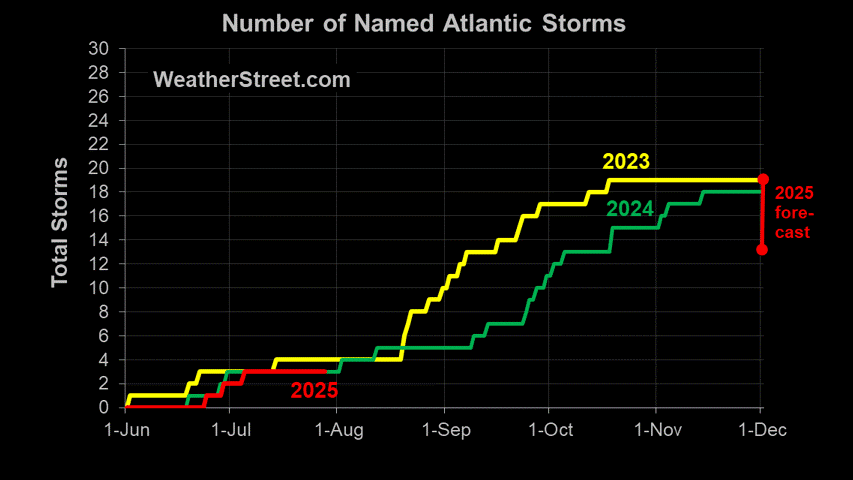2006 Hurricane Season Wrap up

Well this was certainly the year that wasn't. After 2005's record setting season, 2006 was expected to provide a large number of very intense storms. We were expecting that we would be evacuating to the Hill Country at least once and possibly twice during the year. I created this blog with the intention that I would have so much to write about that I would be writing nearly full time and my readership would be high enough to justify turning on ads for an extra penny or two. Instead, I was looking to the western Pacific to find tropical storm information to post on. It is rather ironic in my mind that the worst tropical weather that we've seen here in Texas came from the Pacific across Mexico. The Gulf was quiet this year.
The high expectations for the year were due to fear from last year, the increasing Atlantic multidecadal oscillation, and the potential for Global Warming to cause more intense hurricanes due to warmer tropical waters. The hurricane experts and climatologists were pointing to the MDO while GW alarmists were certain that we would see a massive climate catastrophe right now since we didn't ratify Kyoto.
There have been many articles trying to describe the reasons that the season had so much less activity than predicted. In my limited meteorological mind, three factors overrode all others.
1. First of all, typically during the summer months, a high pressure system becomes centered in the Atlantic near Bermuda. This "Bermuda High" acts as a conveyor that helps to steer hurricanes across the Atlantic and into the Caribbean Sea. Once the storms reach the Caribbean, local highs, lows and pressure gradients between the two steer the storm either up the coast, into central America or into the Gulf of Mexico.
This year, instead of a Bermuda High, a low pressure system and a "cold" front was parked just off the Eastern Coast of the US for much of the early half of the summer. This set up a conveyor that deflected the storms that did form northward into the open waters of the North Atlantic. This kept the activity in the Caribbean and along the US coasts very low with only two tropical storms making landfall all season.
2. The fact that fewer storms developed off the coast of Africa in the first place certainly had a significant effect. From the articles I have read, this was caused by a high level of dust being blown out to sea from the Sahara. I would have thought that the dust particles would have functioned as nucleation sites, acting as a seed bed for rain to form and create stronger storms but that wasn't the case. I am also certain that wind shear off of Africa also hindered the development of storms. Why more storms did not form in the Gulf of Mexico I cannot explain with my limited weather background. The water was certainly as warm as in the past and the few times that a storm did come into the Gulf it just dissipated when I would have expected it to grow.
3. El Nino formed suddenly and early in the Pacific just as the low pressure system along the east coast dissipated. The surprising and unexpected development of El Nino eliminated the potential for any additional storms to develop during the time of year when tropical storm development is usually the greatest. Five storms were predicted for September and October that never developed because of the rise of this weather pattern.
It was certainly a surprising year. Of course one year does not a trend make. Next year could be just as bad as 2005 or it could be normal once again. Based on the MDO, I would expect that we see several years of high tropical storm activity before the we see an overall calming of storm quantity or intensity. Having a single low year anywhere during a 2 - 3 decade period does not ruin the trend, it is just an anomaly. As the MDO declines, then we will see a regular return to low tropical activity - I would guess into the 2020's. Until then we need to be vigilant and watch the skies with a respectful attitude - not panic, but also not be complacent.
Trackbacked to: Dumb Ox News, Woman Honor Thyself, 123 Beta, Don Surber








